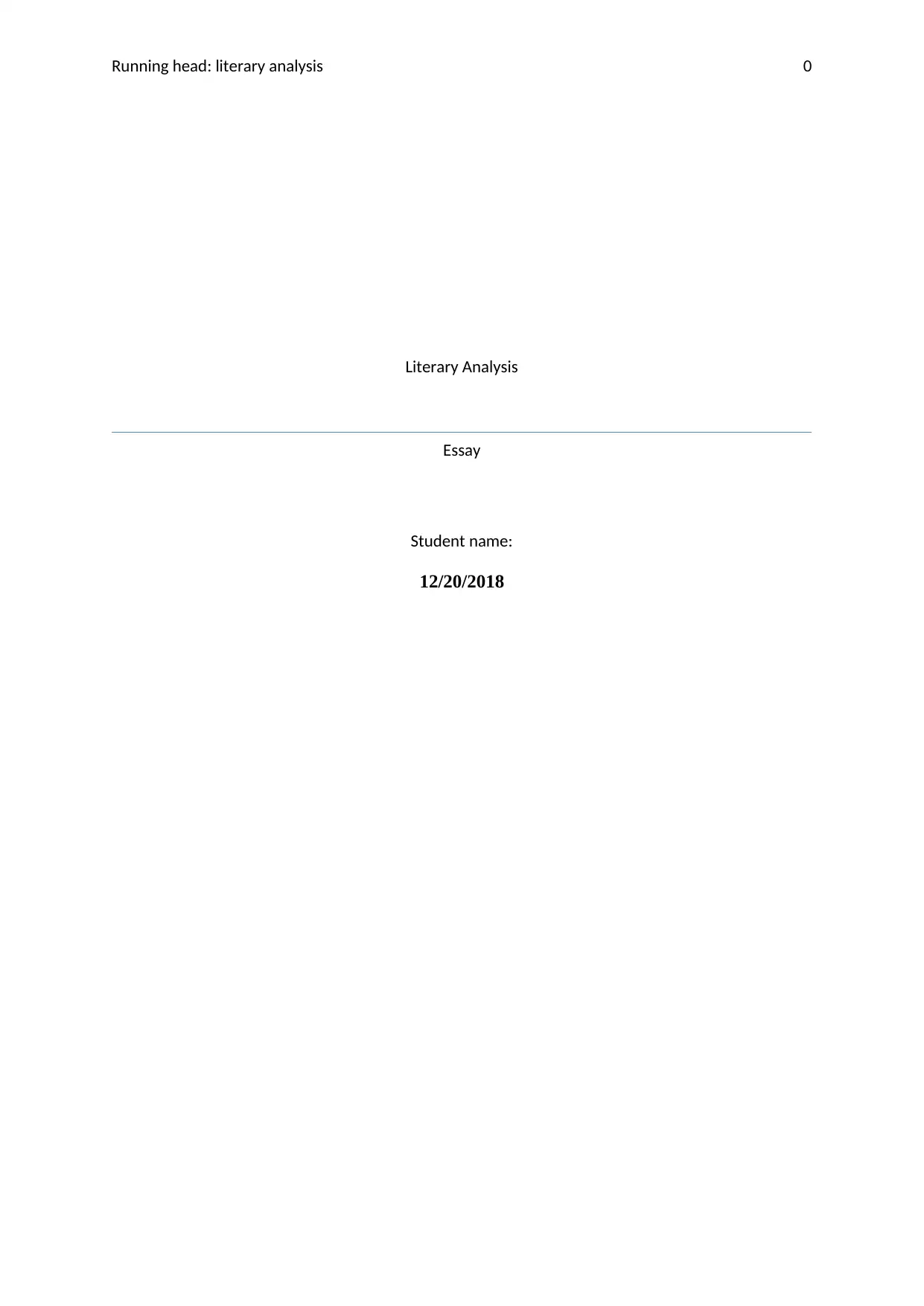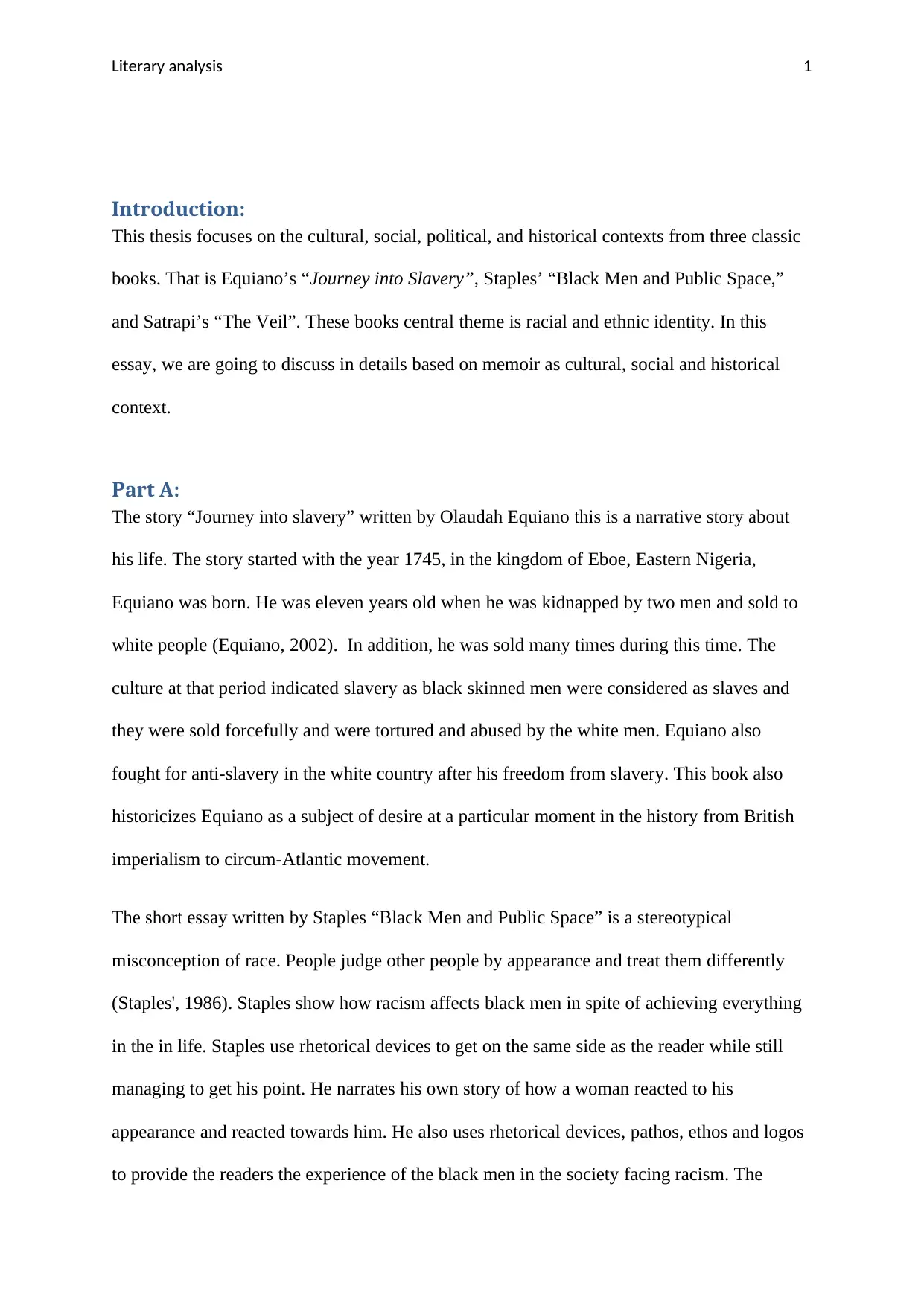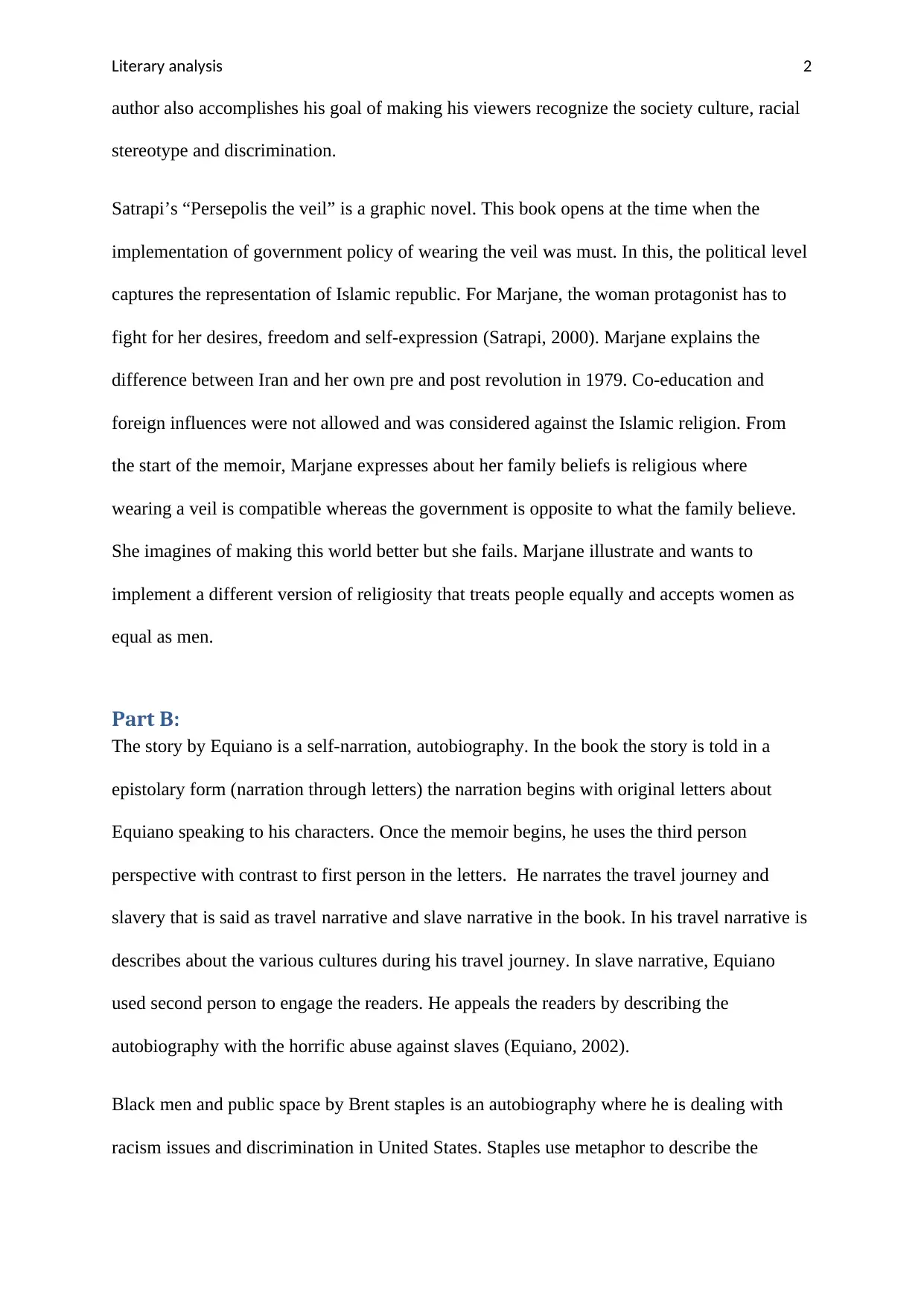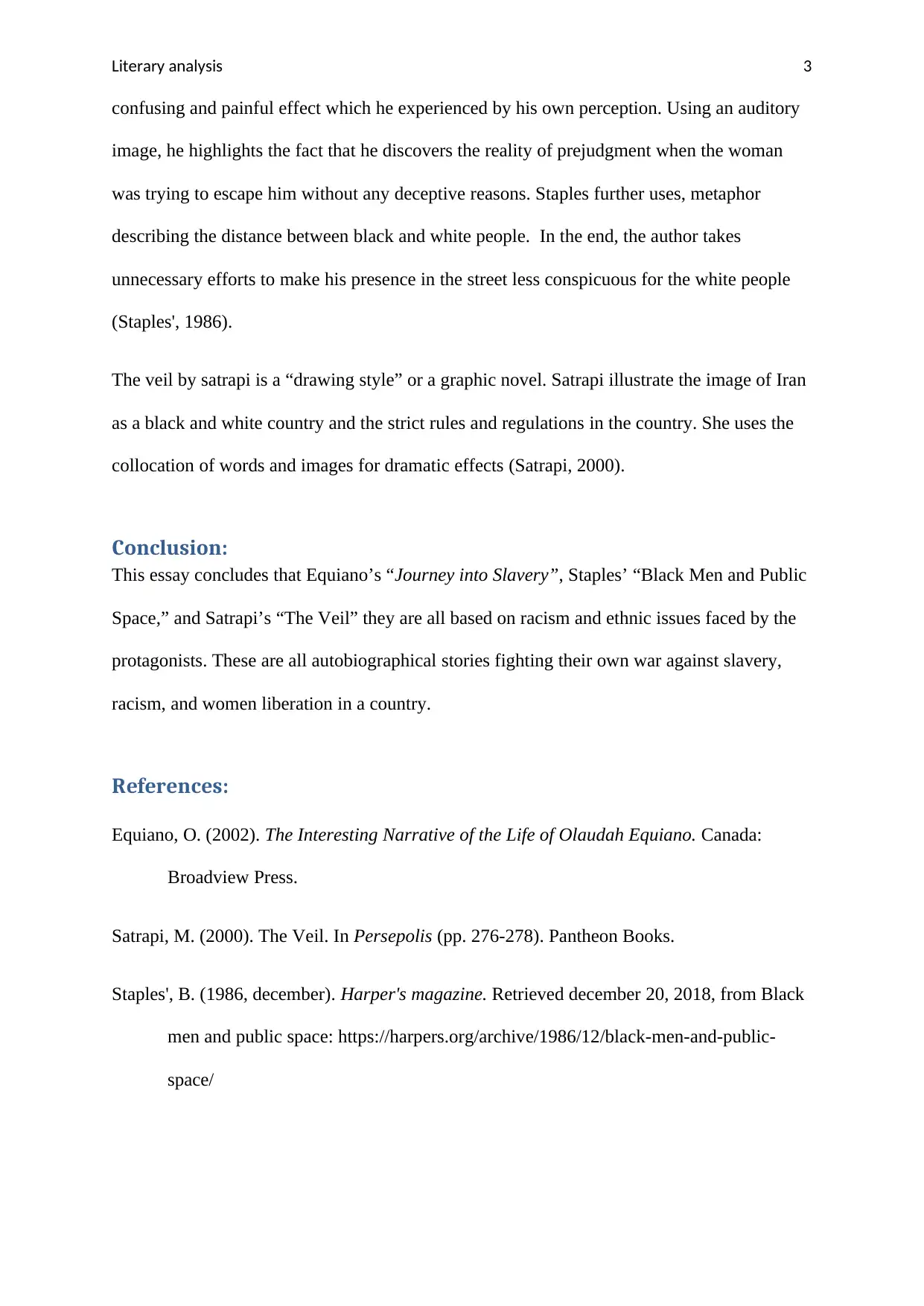LITT 14310G: Analyzing Cultural Contexts in Equiano, Staples, Satrapi
VerifiedAdded on 2023/04/20
|5
|1003
|240
Essay
AI Summary
This essay provides a literary analysis of Olaudah Equiano’s "Journey into Slavery", Brent Staples’ “Black Men and Public Space,” and Marjane Satrapi’s “The Veil,” focusing on how cultural, social, political, and historical contexts inform these memoirs. The central theme revolves around racial and ethnic identity, exploring the protagonists' experiences with slavery, racism, and the struggle for self-expression. Equiano's narrative depicts the horrors of slavery and his fight against it, Staples' essay highlights the racial stereotypes faced by black men, and Satrapi's graphic novel illustrates the impact of political and religious policies on personal freedom in Iran. The analysis also delves into the authors' narrative techniques, such as Equiano's use of epistolary form and second-person address, Staples' use of metaphor, and Satrapi's blend of words and images, to convey their experiences and challenge societal norms. The essay concludes that these autobiographical stories are powerful testaments to the fight against oppression and the pursuit of equality.
1 out of 5







![[object Object]](/_next/static/media/star-bottom.7253800d.svg)